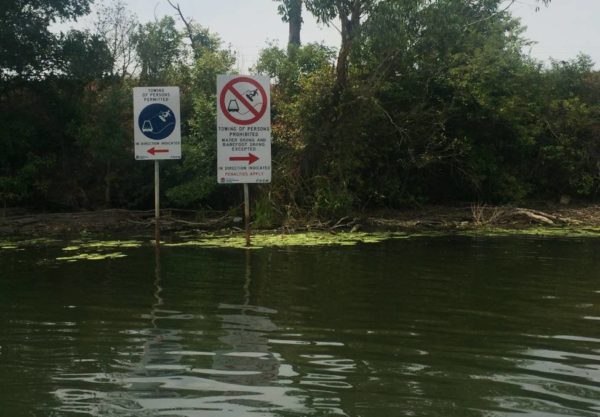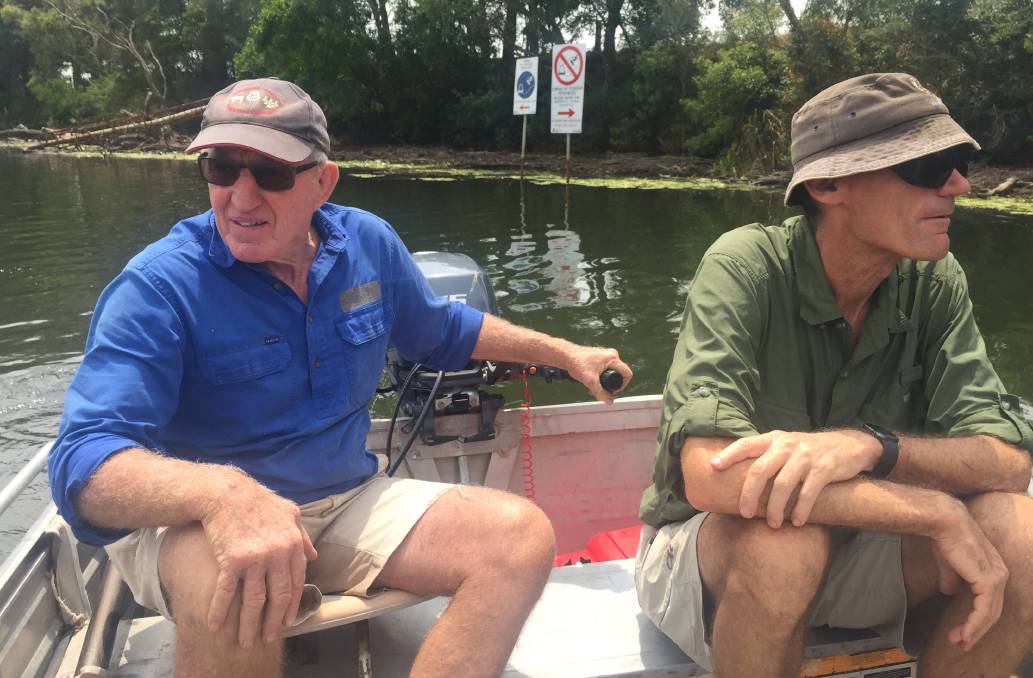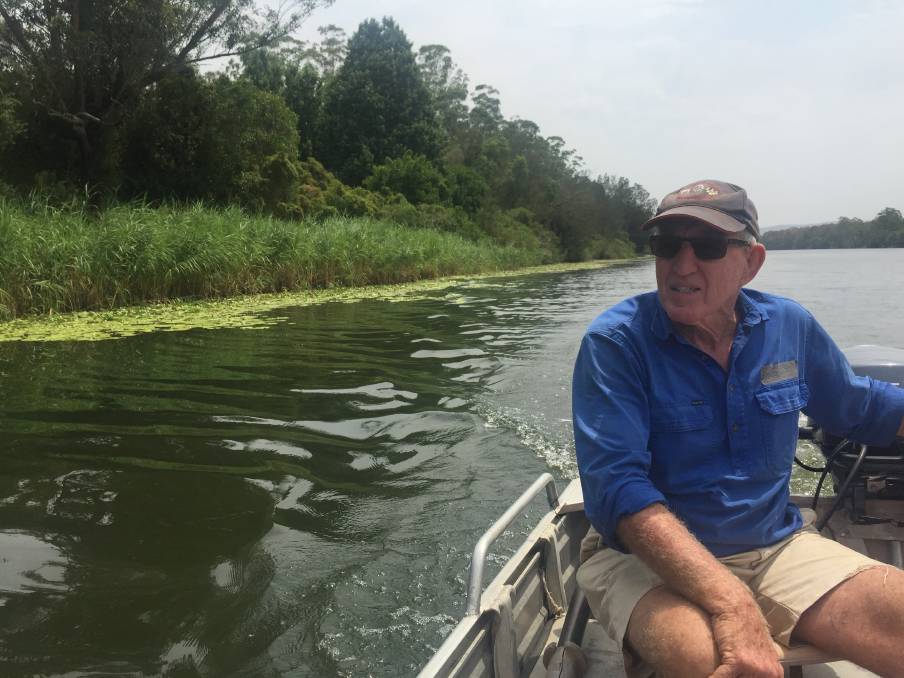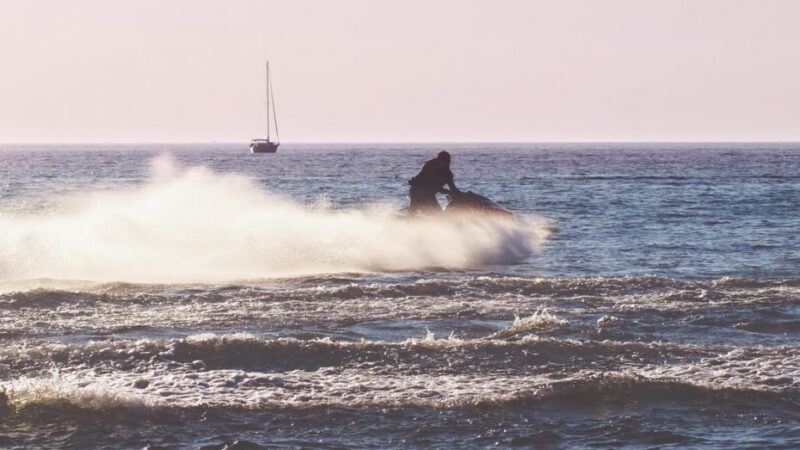news, local-news, Williams River, Clarence Town
FOR Brian Gilligan, the debate about power boating’s impact on the Seaham Weir Pool stretch of the Williams River is history repeating. Between February 2006 and June 2008, the former head of the NSW National Parks and Wildlife Service and long-time Seaham resident chaired a consultative group that was designed “to promote a positive approach to safe and equitable boating with care and consideration to the environs of the Williams River”. In that time, it became clear to Mr Gilligan that boating activity, particularly wakeboarding, was a major cause of erosion along the river’s banks. What’s more, he argued in 2008, the boating activity was generating costs being borne by the environment and the landowners along the banks. When it became obvious to Mr Gilligan that little was going to be done by the Labor state government at the time to address those issues, he left the group. He wrote to the acting CEO of NSW Maritime, the government’s regulatory body for boating, saying that with the damage being done by boating activity, “it would be irresponsible for government to allow the current situation on the Williams to continue”. Almost 12 years since he wrote those words, Mr Gilligan read the report in Saturday’s Newcastle Herald about the Williams River Care Association’s calls for wake-producing boats to be banned from the weir pool. The group argues many of the boats used for wakeboarding and skiing are causing erosion and damaging water quality in this stretch of the river, which is also a major part of the lower Hunter’s drinking water supply. Despite a recommendation in a 2015 report for temporary boating restrictions as a measure to prevent further erosion of the banks, the wake-producing boats remain on this reach of the Williams River. It may be a different time, with a different government in power, but to Brian Gilligan, the issues of the past have flowed into the present, harming the river’s future. “I continue to believe it is irresponsible for government to simply keep ‘kicking the can down the road’, allowing the current situation to continue,” Mr Gilligan said. Brian Gilligan, who was also a board member of Hunter Water and held senior positions in the NSW Environment Protection Authority, said it was “incredibly disappointing” and “very frustrating” the issue was ongoing. He believed the wake-producing boats should not be on the weir pool, which stretches for about 20 kilometres from Seaham Weir upstream to Clarence Town. “I struggle to see how they can have a place, long term, on this part of the river,” Mr Gilligan said. “It’s too narrow, the potential for damaging the banks is too great, and I think that their activity is going to have to be restricted to other areas.” Transport for NSW has a boating traffic management plan for the Seaham Weir Pool. There are speed limits, along with restricted areas for wakeboarding and water skiing. Yet to Digby Rayward, the chairman of the Williams River Care Association and a landowner downstream from Clarence Town, the boating plan isn’t stopping the degradation. Digby Rayward said he’d been observing the environmental damage along the river for years. “This is a bit like denying climate change,” Mr Rayward said. “This hasn’t happened overnight. This has taken 20 years to happen. And if we keep going, it’s just going to get worse.” In late 2016, a Williams River erosion management working group was formed, led by Transport for NSW and involving government agencies, Hunter Water and local councils. A Transport for NSW spokesperson said its “goal continues to be to work with other agencies and stakeholders to find a pragmatic, shared solution to a complex issue”. One proposal was for a section of the river’s banks to be armoured with rocks to prevent erosion. The estimated cost of that proposal was about $7.4 million. Digby Rayward said the proposal was “ridiculous” and would not stop the river’s health from deteriorating. He said the money would be better spent on creating a wakeboarding venue in a more appropriate location. Brian Gilligan also did not believe armouring the banks was a solution. He said it would impact on the weir pool’s environmental value, as well as affect how others, such as fishers, used the river. “I think that reach provides so many other values,” Mr Gilligan said. “Why would one user group totally dictate what happens to the river?” This story first appeared on The Herald.
https://nnimgt-a.akamaihd.net/transform/v1/crop/frm/scott.bevan/f7cb0415-61bd-45bc-871f-3bb2489656c2.jpg/r9_93_3496_2063_w1200_h678_fmax.jpg
FOR Brian Gilligan, the debate about power boating’s impact on the Seaham Weir Pool stretch of the Williams River is history repeating.
Between February 2006 and June 2008, the former head of the NSW National Parks and Wildlife Service and long-time Seaham resident chaired a consultative group that was designed “to promote a positive approach to safe and equitable boating with care and consideration to the environs of the Williams River”.
In that time, it became clear to Mr Gilligan that boating activity, particularly wakeboarding, was a major cause of erosion along the river’s banks. What’s more, he argued in 2008, the boating activity was generating costs being borne by the environment and the landowners along the banks.
When it became obvious to Mr Gilligan that little was going to be done by the Labor state government at the time to address those issues, he left the group.
He wrote to the acting CEO of NSW Maritime, the government’s regulatory body for boating, saying that with the damage being done by boating activity, “it would be irresponsible for government to allow the current situation on the Williams to continue”.
The group argues many of the boats used for wakeboarding and skiing are causing erosion and damaging water quality in this stretch of the river, which is also a major part of the lower Hunter’s drinking water supply.
Despite a recommendation in a 2015 report for temporary boating restrictions as a measure to prevent further erosion of the banks, the wake-producing boats remain on this reach of the Williams River.
It may be a different time, with a different government in power, but to Brian Gilligan, the issues of the past have flowed into the present, harming the river’s future.
“I continue to believe it is irresponsible for government to simply keep ‘kicking the can down the road’, allowing the current situation to continue,” Mr Gilligan said.

LIMITS: Wakeboarding and water skiing signs on the Williams River. Picture: Scott Bevan
Brian Gilligan, who was also a board member of Hunter Water and held senior positions in the NSW Environment Protection Authority, said it was “incredibly disappointing” and “very frustrating” the issue was ongoing.
He believed the wake-producing boats should not be on the weir pool, which stretches for about 20 kilometres from Seaham Weir upstream to Clarence Town.
“I struggle to see how they can have a place, long term, on this part of the river,” Mr Gilligan said. “It’s too narrow, the potential for damaging the banks is too great, and I think that their activity is going to have to be restricted to other areas.”
Transport for NSW has a boating traffic management plan for the Seaham Weir Pool. There are speed limits, along with restricted areas for wakeboarding and water skiing.
Yet to Digby Rayward, the chairman of the Williams River Care Association and a landowner downstream from Clarence Town, the boating plan isn’t stopping the degradation. Digby Rayward said he’d been observing the environmental damage along the river for years.
“This is a bit like denying climate change,” Mr Rayward said. “This hasn’t happened overnight. This has taken 20 years to happen. And if we keep going, it’s just going to get worse.”

CONCERNED: Williams River Care Association members Digby Rayward and Brian Ness inspect the banks.
In late 2016, a Williams River erosion management working group was formed, led by Transport for NSW and involving government agencies, Hunter Water and local councils.
A Transport for NSW spokesperson said its “goal continues to be to work with other agencies and stakeholders to find a pragmatic, shared solution to a complex issue”.
One proposal was for a section of the river’s banks to be armoured with rocks to prevent erosion. The estimated cost of that proposal was about $7.4 million.
Digby Rayward said the proposal was “ridiculous” and would not stop the river’s health from deteriorating. He said the money would be better spent on creating a wakeboarding venue in a more appropriate location.
Brian Gilligan also did not believe armouring the banks was a solution.
He said it would impact on the weir pool’s environmental value, as well as affect how others, such as fishers, used the river.
“I think that reach provides so many other values,” Mr Gilligan said. “Why would one user group totally dictate what happens to the river?”

Digby Rayward, the chairman on the Williams River Care Association, inspects the banks from his tinny. Picture: Scott Bevan
This story first appeared on The Herald.





Recent Comments